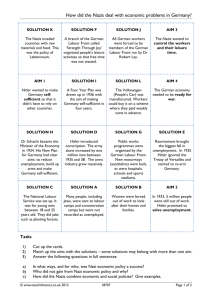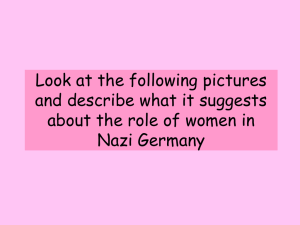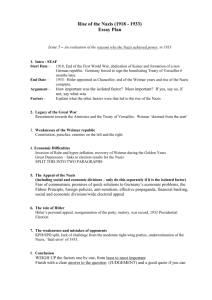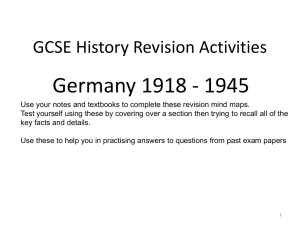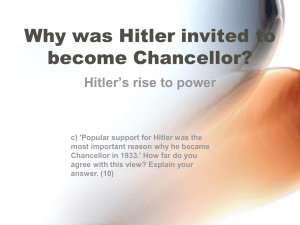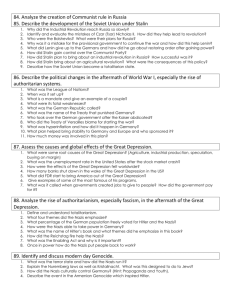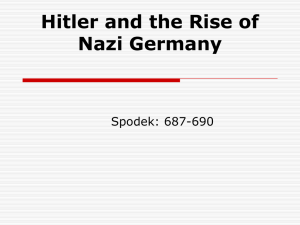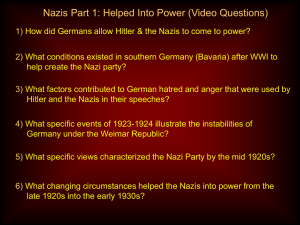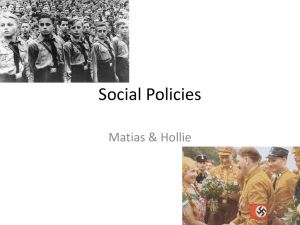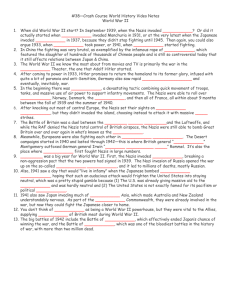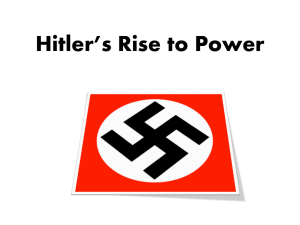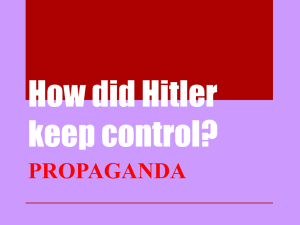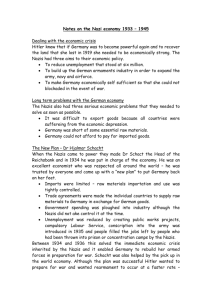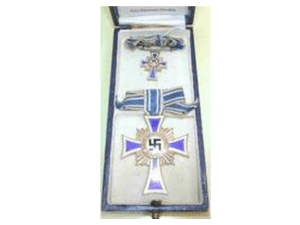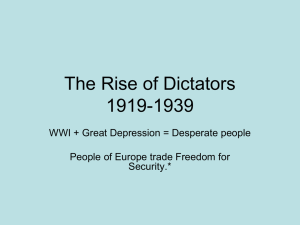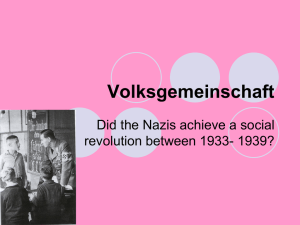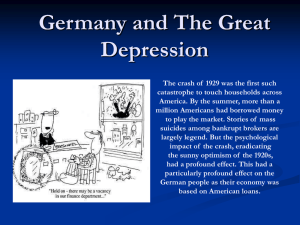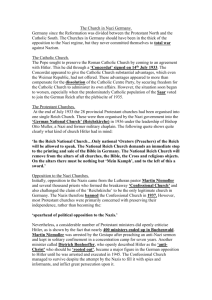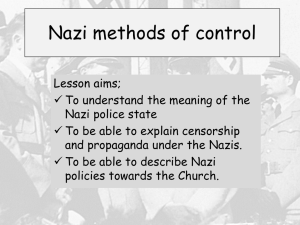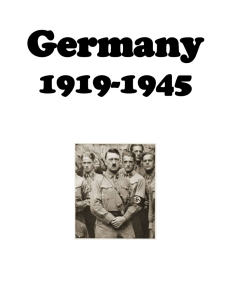Revision – Rise of the Nazis and Nazis in Power
advertisement
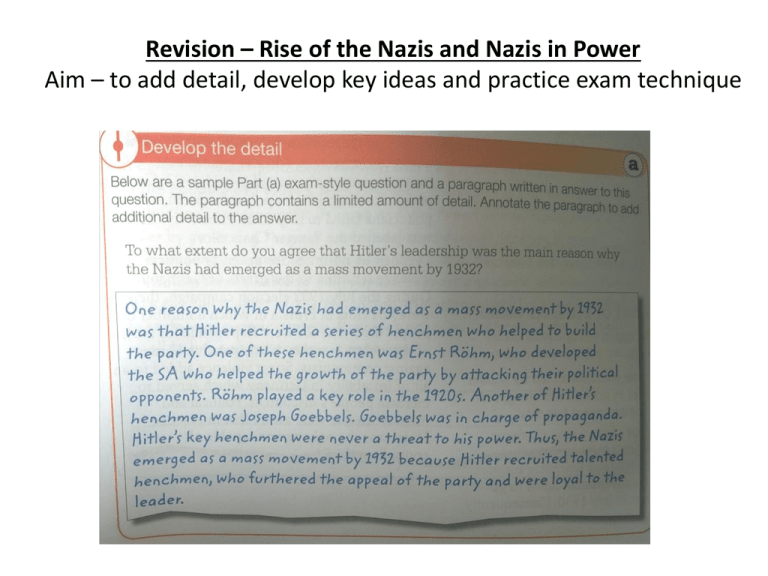
Revision – Rise of the Nazis and Nazis in Power Aim – to add detail, develop key ideas and practice exam technique Clarifications/missing knowledge • • • • • • • • Hitler 55th member 1919, as a spy for the government, within a year drafts 25 point programme, 1921 became party leader More votes – protestants, agricultural, suburbs. Less votes – catholics, urban workers. There were local variations – Silesian Catholics in East Germany voted for the Nazis as they lost land to Poland 1929 – Nazis alliance with Hugenberg’s Nationalist Party – got access to a wider media empire – wider circulation. Funding from Thyssen. DVAP. SA ‘propaganda by deed’ – smashing the Communists Von Schleicher in 1932 wanted to split the Nazis to get them to cooperate with trade unionists. Tried to get Gregor Strasser on side by offering him the position of vice-chancellor. Hitler opposed it, strasser became increasingly isolated and eventally resigned in 1932. Mittlestand. Also religious and local factors. Hitler rejected being vice-chancellor, then offered to Strasser, hoped to control Hitler, Hindenburg scandal Hitler proudly defended NOLK to the Reichstag, left-wing, control SA, army pressure, Strasser. Stennes revolt in 1931 was when Stennes rebelled against the orders of Hitler and Goebbels to act legally and limit SA violence, Hitler defeated the revolt with a small purge. Source Stations: Rise of the Nazis • Early years – Hitler, Goebbels, Beer Hall Putsch, SA, support • Becoming chancellor – method and causes, targeted votes, p. 135 pink book other weak chancellors, Bruning pp. 136-137, role of Hindenburg 142-143 • Consolidating power – chancellor to fuhrer – night of the long knives, threat from the left of the party, enabling act, death of hindenburg Plan an exam question based on your station. • Early years – Hitler, Goebbels, Beer Hall Putsch, SA, support – The Nazis were no more than a fringe irritant in German politics from 1920-1929. How far do you agree? • Becoming chancellor – method and causes, targeted votes and propaganda, p. 135 pink book other weak chancellors, Bruning pp. 136-137, role of Hindenburg 142-143, – To what extent was Nazi ideology the main reason for the success of the Nazi The failure of mainstream politicians in the period 1929 to 1932 led to the emergence of the Nazis as a mass movement. How far do you agree? • Consolidating power – chancellor to Fuhrer – night of the long knives, threat from the left of the party, enabling act, death of Hindenburg. – To what extent was the support of the elites the main reason why the Nazis were able to consolidate their power in the period January to July 1933? The Nazis in Power The Nazis in Power • 1933-1939 – Opposition (aspects, suppression of, and terror) – Conformity and popularity (Gleichschaltung, propaganda, censorship, culture, army, Schacht’s economy 1933-6, Goering 1936-9, big business, Volksgemeinschaft, workers (different kinds), education/youth, religion, women, family, outsiders • 1939-1945 – – – – Life in wartime Germany – general WWII Persecution of the Jews War Economy Opposition and conformity, morale Plan an exam question based on your station. 1933-1939 – The Nazi regime enjoyed broad consent brought about by popular policies from 1933 to 1939. How far do you agree? – Did Germany have a war economy in peacetime? 1939-1945 – The Final Solution was the result of systematic planning. How far do you agree? – The handling of the economy was poorly coordinated and this accounts for the weaknesses in German war production in the years 1939 to 1945. How far do you agree? – To what extent did the Nazi Regime face serious opposition within Germany during the years 1939–45? – The morale of the German people stayed remarkably high during WWII. How far do you agree?
